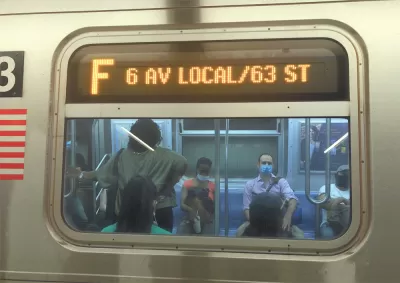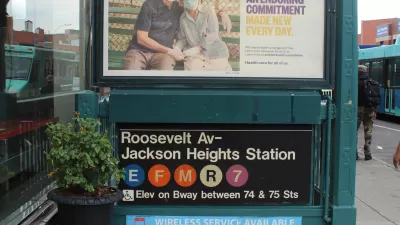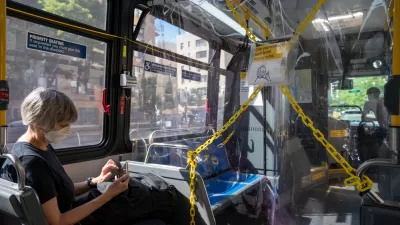A big piece of the process of reopening New York City for business is scheduled for May 17, but numerous challenges remain in getting the city that never sleeps back on track.

New York City will return to 24-hour subway service on May 17, report Winnie Hu, Daniel E. Slotnik, and Luis Ferré-Sadurní. The restoration of around-the-clock service is one of a series of reopenings announced for New York, New Jersey, and Connecticut this week.
"Restaurants, offices, retail stores, theaters, museums, barber shops, amusement parks and gyms and fitness centers will all be allowed to operate at full capacity for the first time since restrictions were adopted last year to prevent the spread of the virus," according to the article."
The announcement by New York Governor Andrew Cuomo accelerates the plans of political rival and mayor of New York City, Bill de Blasio, who had recently announced a reopening goal of July 1 for the city.
"Businesses in New York will still have to abide by the Centers for Disease Control and Prevention’s social distancing guidelines, which require a minimum of six feet of space between individuals," according to the article, noting that it might still not make sense for some businesses to reopen.
A separate article by Clayton Guse focuses more specifically on the subway reopening. Guse reports that while announcing the subway reopening, the governor touted the improvements made to the subway system during the months with limited service. "Subway trains have never been cleaner than they are now," said Cuomo.
Guse notes that one significant challenge still complicating the reopening of overnight subway service is a worker shortage at the MTA. "The agency has quietly cut more than 4,000 jobs since the start of the pandemic, leaving too few crews to run full bus and subway schedules," according to Guse.

Alabama: Trump Terminates Settlements for Black Communities Harmed By Raw Sewage
Trump deemed the landmark civil rights agreement “illegal DEI and environmental justice policy.”

Study: Maui’s Plan to Convert Vacation Rentals to Long-Term Housing Could Cause Nearly $1 Billion Economic Loss
The plan would reduce visitor accommodation by 25% resulting in 1,900 jobs lost.

Why Should We Subsidize Public Transportation?
Many public transit agencies face financial stress due to rising costs, declining fare revenue, and declining subsidies. Transit advocates must provide a strong business case for increasing public transit funding.

Paris Bike Boom Leads to Steep Drop in Air Pollution
The French city’s air quality has improved dramatically in the past 20 years, coinciding with a growth in cycling.

Why Housing Costs More to Build in California Than in Texas
Hard costs like labor and materials combined with ‘soft’ costs such as permitting make building in the San Francisco Bay Area almost three times as costly as in Texas cities.

San Diego County Sees a Rise in Urban Coyotes
San Diego County experiences a rise in urban coyotes, as sightings become prevalent throughout its urban neighbourhoods and surrounding areas.
Urban Design for Planners 1: Software Tools
This six-course series explores essential urban design concepts using open source software and equips planners with the tools they need to participate fully in the urban design process.
Planning for Universal Design
Learn the tools for implementing Universal Design in planning regulations.
Smith Gee Studio
Alamo Area Metropolitan Planning Organization
City of Santa Clarita
Institute for Housing and Urban Development Studies (IHS)
City of Grandview
Harvard GSD Executive Education
Toledo-Lucas County Plan Commissions
Salt Lake City
NYU Wagner Graduate School of Public Service





























